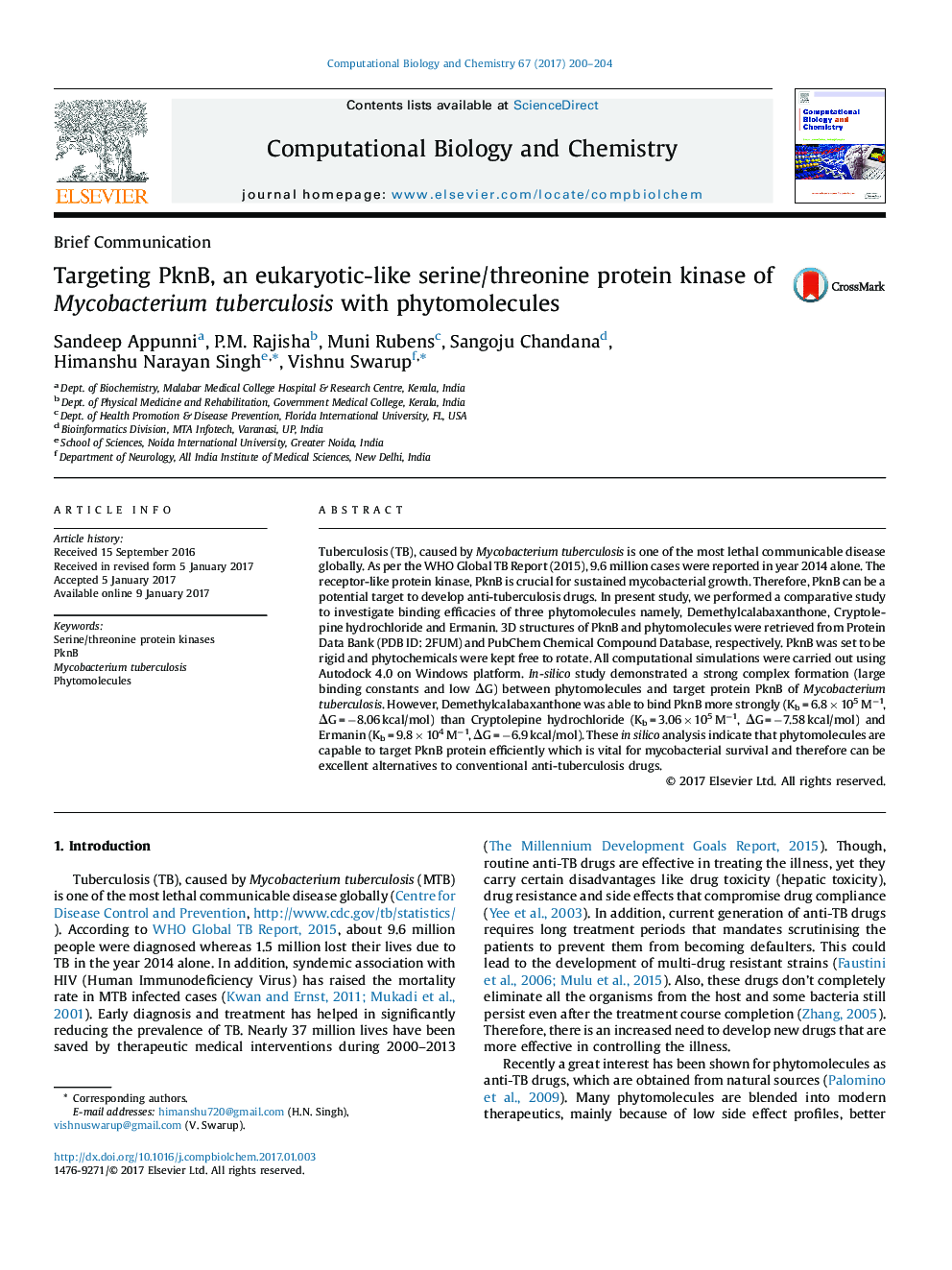| Article ID | Journal | Published Year | Pages | File Type |
|---|---|---|---|---|
| 4752658 | Computational Biology and Chemistry | 2017 | 5 Pages |
â¢Phytochemicals are very effective as anti-tubercle drugs with less adverse effects.â¢In-silico analysis showed phytomolecules bind to protein kinase PknB of Mycobacterium.â¢Demethylcalabaxanthone binds PknB more strongly than Cryptolepine HCl, Ermanin.â¢Further studies are needed to establish safety & effectiveness of phytochemicals.
Tuberculosis (TB), caused by Mycobacterium tuberculosis is one of the most lethal communicable disease globally. As per the WHO Global TB Report (2015), 9.6 million cases were reported in year 2014 alone. The receptor-like protein kinase, PknB is crucial for sustained mycobacterial growth. Therefore, PknB can be a potential target to develop anti-tuberculosis drugs. In present study, we performed a comparative study to investigate binding efficacies of three phytomolecules namely, Demethylcalabaxanthone, Cryptolepine hydrochloride and Ermanin. 3D structures of PknB and phytomolecules were retrieved from Protein Data Bank (PDB ID: 2FUM) and PubChem Chemical Compound Database, respectively. PknB was set to be rigid and phytochemicals were kept free to rotate. All computational simulations were carried out using Autodock 4.0 on Windows platform. In-silico study demonstrated a strong complex formation (large binding constants and low ÎG) between phytomolecules and target protein PknB of Mycobacterium tuberculosis. However, Demethylcalabaxanthone was able to bind PknB more strongly (Kb = 6.8 Ã 105 Mâ1, ÎG = â8.06 kcal/mol) than Cryptolepine hydrochloride (Kb = 3.06 Ã 105 Mâ1, ÎG = â7.58 kcal/mol) and Ermanin (Kb = 9.8 Ã 104 Mâ1, ÎG = â6.9 kcal/mol). These in silico analysis indicate that phytomolecules are capable to target PknB protein efficiently which is vital for mycobacterial survival and therefore can be excellent alternatives to conventional anti-tuberculosis drugs.
Graphical abstractDownload high-res image (233KB)Download full-size image
